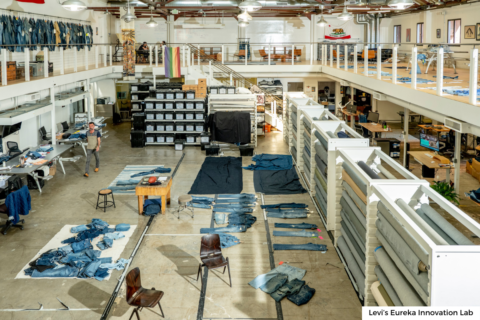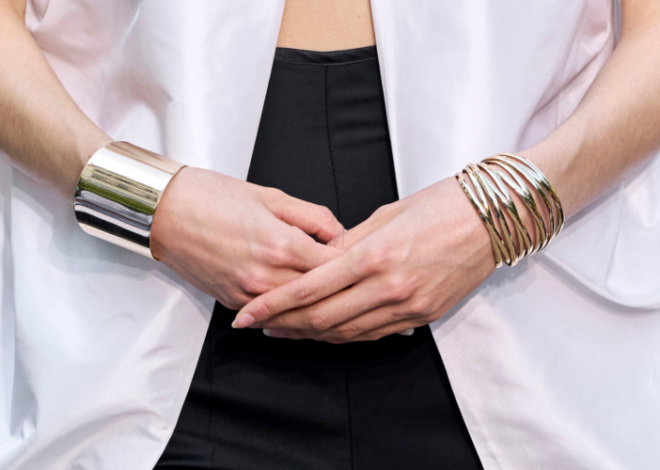Why Levi’s 501 Is Still the Most Iconic Pair of Jeans
- Being Outside Is Good For Your Body and Mind — Here’s Why - December 14, 2023
- The Chicest Bracelets for Women (All Under $100) - December 14, 2023
- Water Is Life — Here Are 11 Simple Ways to Drink More of It - December 14, 2023
From historical workwear to innovative fashion, no jeans compare to the ever-adaptable button-up bottoms. Here is a glimpse into the past, present, and future of the 501 Jeans.

What does your favourite pair of jeans mean to you? On a recent trip to Levi’s headquarters in San Francisco, I found myself pondering this question. After all, with its pop-culture ubiquity and trend-transcending force, the resilient blue jean has an unmatched wardrobe staying power. Finding the perfect fit is like meeting a lifelong friend; rips and frays add character, while stains become badges of honour. And for 150 years, the legendary Levi’s® 501 jeans have been the blueprint for this unique sense of companionship. So, I took a trip through their long-lasting legacy to figure out why.
For starters, at the risk of stating the obvious: history. As the original blue jean, 501s have served as a template for every pair that has come since. It all started in 1873, when the first iteration was created as durable workwear for miners. Though denim already existed, Levi’s changed everything with one small addition: rivets. Who knew little metal fasteners would change the course of fashion forever? This seemingly minor innovation made jeans stronger and more reliable; in other words, it made them what they are today. Of course, we all know what happens next. Going from a strictly utilitarian product to a stamp of self-expression, the straight-fit, button-fly jean has only become more relevant over the years. To truly understand this evolution, I visited the Levi’s Vault in the lobby of the brand’s headquarters.
This vast collection includes thousands of artifacts that document history through the eyes of well-worn Levi’s. What did I learn? Over the decades, 501 bottoms have been part of era-defining movements and cultural shifts. Take the 1960s, when they were the unofficial uniform of rebellious young people. During the counterculture movement, Levi’s were commonly cut, stitched, and embellished with messages of empowerment. Many of these vintage gems live on in the archive, along with the wardrobe relics of world-changing figures—from Albert Einstein’s pipe-smoke-smelling leather jacket to the worn-out pair of jeans that were part of Steve Jobs’ daily uniform. As canvases for personalization, 501 jeans have surpassed the boundaries of clothing entirely to become emblems of social change.

Then there’s the fashion of it all. The Levi’s Vault serves as a reminder of trends (or crimes, depending on who you ask) of bygone years. Naturally, certain standout pieces capture the colourful chaos of Y2K wardrobes, from a bedazzled Canadian tuxedo made for NSYNC’s Space Cowboy tour to the rhinestone-embellished jeans worn by Jennifer Lopez during her 2001 Super Bowl performance (Iconic). Point is, throughout history, the humble 501 jeans have seamlessly taken on their surroundings, thus embodying the people who once wore them and pinpointing treasured moments in mainstream culture.
Cut to today, when, let’s face it: we’re living in an era of denim division. Whether it’s the generational split between skinny and bootcut styles or the viral unrest over high-waisted versus low-rise, the modern fashion landscape is full of opposing stances. But while trends ebb and flow, the 501 jeans never go out of style. What do they represent in 2023, you ask? Well, anything. “I think [they’ve] become the default garment if you want to fit in in just about any group of interest—from punk to hip-hop to cowboy,” Levi’s historian Tracey Panek told me as we toured the archive. “They’re versatile and as relevant today as ever.”
From TikTok #OOTDs to the runways of Paris Fashion Week, today’s 501 jeans can’t be limited to a single thing, and that’s the point. With a design that hasn’t changed much since its inception, 501 bottoms have been able to latch on to new ideas, aesthetics, and subgroups. And just like they were decades ago, they’re still playing a part in youth-led, future-focused movements. Case in point: environmentalism.
Producing denim is notoriously bad for the planet, often requiring huge amounts of energy and water. Enter Levi’s Eureka Innovation Lab. Within walking distance of the Levi’s Vault, the warehouse serves as a space to conceive sustainable production solutions. The result? New, cleaner iterations of the 501 jeans. Whether by using cottonized hemp (which works similarly to cotton but uses way less water) or dyeing clothes with all-natural indigo instead of its chemically altered counterpart, Levi’s is on a mission to innovate 501 jeans while keeping their signature made-to-last quality. This also means rethinking standard production practices.

We all love a new pair of distressed denim, complete with rips, frays and faded pleats. But those pre-worn details are typically added manually—and it turns out it’s an extremely taxing job. So, Levi’s came up with a solution that not only relieves physical labour but also reduces water wastage and combats overproduction. Using a laser called FLX (future-led execution), the Innovation Lab can create a pair of vintage-looking jeans in just seconds. That is the essence of the 501 denim legacy: by honouring the past while staying mindful of the future, each pair is just as fresh today as it was 150 years ago.
Perhaps the biggest secret behind the 501 jeans’ enduring appeal is that they don’t chase trends, they set them. Sure, they’ve been at the forefront of popular culture for decades, but 501 jeans are not trying to impress anyone. And that, in turn, is what makes them so special. The 501 “can be adapted by everybody, but doesn’t change to try capture them,” said Paul O’Neill, design director, Collections, at Levi Strauss & Co., toward the end of my trip. “It’s this slow burn that’s waiting to be found. And when you find it, that’s it. You’ll never go to something else.” All in all, that’s a pretty great way to define your favourite pair of jeans.
Click here to learn more and shop for your new favourite pair of 501 jeans


